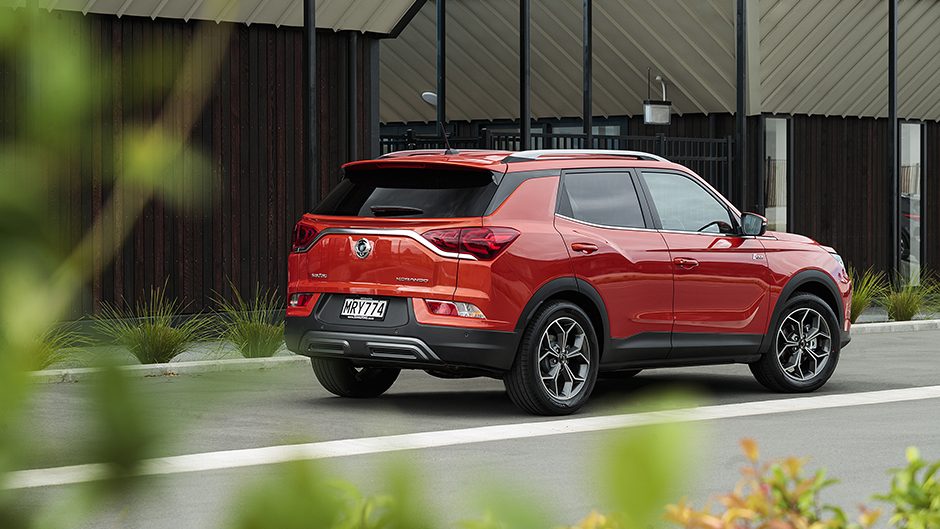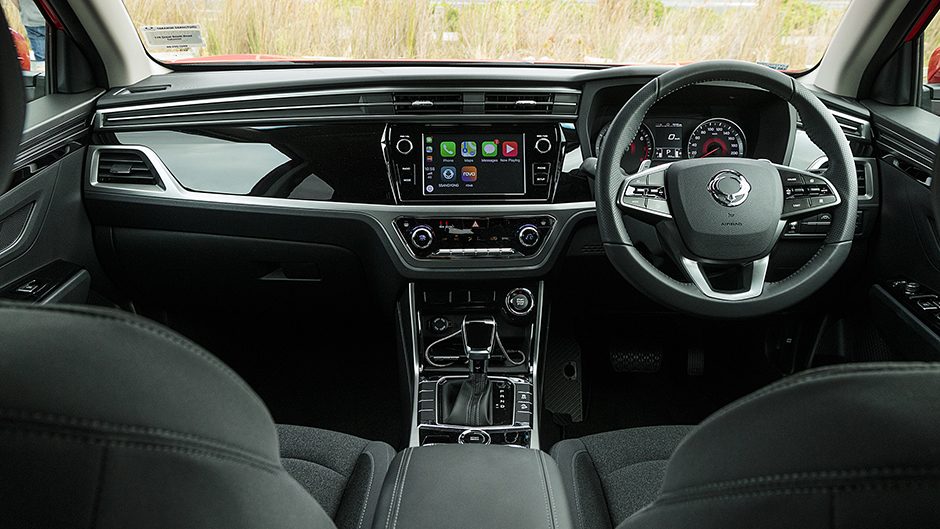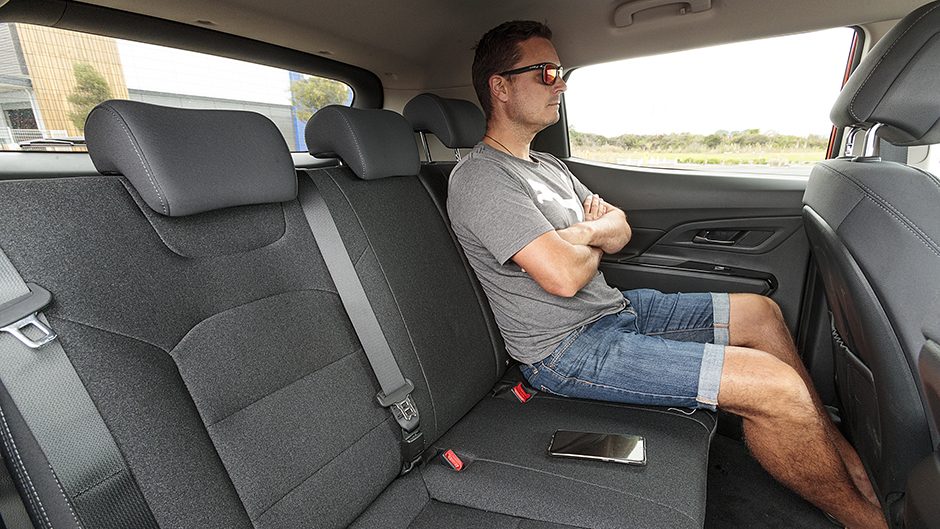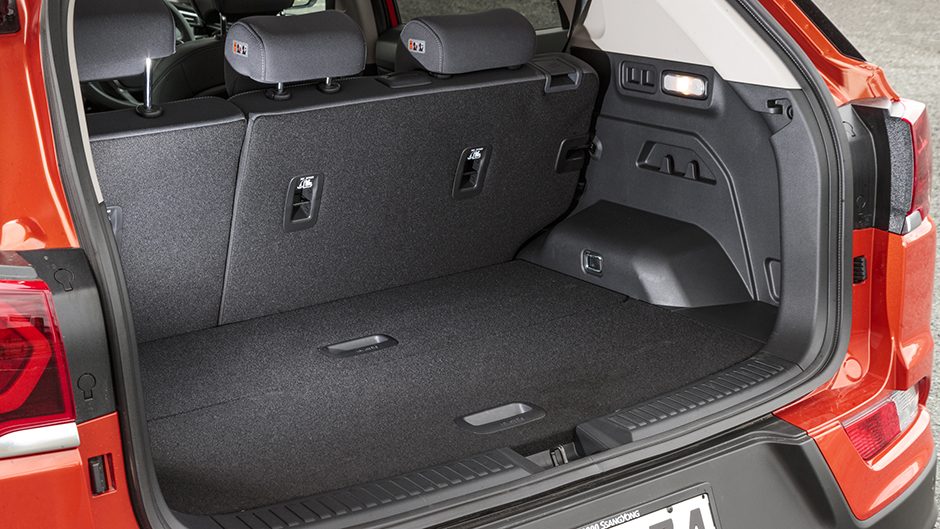You might remember the first Korando they sold here as being particularly challenging to behold. It had a puckered look up front, the styling being an evolution of the rebadged Jeep that went before it. While those early versions were body-on-frame off-roaders, the Korando you can remember became a monocoque crossover in its third generation, which has fared well here since it went on sale in 2014. Its origins actually date back to 2010, so it was well due a renewal, and the fourth generation has just arrived.
It’s as striking as the original was awful. An all-new offering, it’s been styled in South Korea to be ‘modern and urbane’. The ‘birds wing’ front grille is a prominent feature as are the strong character lines down the flanks. It catches people’s attention, who give it another look as they walk by, while some mention it having a certain VW-esque aesthetic. Not a bad thing then.

Compared with the older model, this is a little longer, wider and lower. The underpinnings feature more high-strength steel and structural adhesives for improved rigidity. SsangYong says it has improved NVH with better sealing techniques, improved mounts for the subframes, and added more sound deadening. So all the usual things we associate with new models then. There’s more content inside, with up to seven airbags, active safety features to net a five-star crash rating and most of the modern conveniences you’d want in your new car purchase. Yet it still retains its value aspect, the range starting at $29,990 for the Sport, although there is a slight caveat. This they call ‘introductory pricing’, but SsangYong NZ has said it will offer it at that price for as long as it can be sustained. There are exchange rate pressures at work, with the price likely to rise to $31,990 at some point. But we think the $35,990 Limited, as sampled here, is a better deal given it gets additional high-end features like active cruise, smart key, privacy glass, roof rails, leather trimmed wheel, parking sensors, more active safety kit, electric park brake, and climate air.
With most Korandos having been sold here between 2014 and 2017, the timing is good in terms of those looking to trade up. SsangYong NZ says its first shipment has been allocated and future supply might be tight with dramas around the ongoing stinkbug fiasco, not to mention potential production hold ups connected with Covid-19.
But that’s the bad news out of the way; the rest is all good. It starts with a move to a turbocharged line-up, a 1.5-litre turbopetrol replacing the old 2.0-litre. This manages 120kW but it’s the 280Nm at 1500rpm through to 4000rpm that makes for a more relaxed drive. Those who prefer diesel need not fear, as the SPR model returns with a new 1.6-litre unit summoning 100kW and 324Nm at 1500-2500rpm. This is $39,990 and features the same spec as the Limited, but retains its on-demand 4×4 driveline, where the 1.5 is front-wheel drive. The diesel also tows 500kg more than the petrol with a braked rating of 2000kg. Both use a six-speed auto. The quoted combined average is 6.3L/100km for the diesel and 7.7 for the petrol. There’s an EV version too, which could become available here in 12 months or so.

For urbanites, the 1.5 is all they’ll ever need. It delivers its best at everyday speeds, with torque aplenty from just above idle. You’re not on a constant search for the go with this one. Korando gets off the mark smartly, and the 1.5 pulls genuinely well from 1500rpm. The six-speed auto is typical SsangYong – they don’t like to rush the gearchanges, preferring refined transitions between the ratios.
It’s quiet both in terms of road noise and excess engine clamour. The steering’s easy on the arms.
There are two drive modes, not that you’ll bother much with the Sport function, or the shift paddles either. Of more use is the adaptive cruise, which does the job in traffic, bringing you to a halt in the jam. If you’re a tailgater, the system will warn of your proximity to the car in front. There is a lane keeping and departure warning system too, but it’s opt in, rather than being a default setting.

You’ll need a decent clear stretch ahead to get the overtake done, the trans is a tad laboured with the kickdown request, and won’t rush the changes, or let the engine extend much past 5000rpm, despite a 6500rpm redline. Maybe it’s part of the running in process, as there were only a few hundred kays on the clock of this one.
Through the curves, it doesn’t lean over too far and the front end grips okay too. Through bumpy corners there’s the odd shimmy through the steering while big lumps can ruffle the rear end. The brake pedal is soft underfoot but will haul things up in respectable fashion when you need to stand on it.
As to fuel use, the urban average is listed at 10L/100km, and so city dwellers will likely average in the nines if they can manage to get a few easy motorway miles in the mix.
The cabin is a pleasant enough place at the price asked. SsangYongs are usually well built and while this could do with a few more soft surfaces, there’s just enough of them about and the harder bits don’t look out of place. The simplicity of everything is appreciated, and everyday tasks are easily achieved thanks to those ‘old fashioned’ buttons and dials. The wrap-around dash design is said to be inspired by classical string instruments which might explain the orchestral ditty on start-up. It’s one of many bonging noises the Korando makes but many you can turn off in the trip computer menus while configuring other aspects.

The infotainment system is a no nonsense set-up, but there’s smartphone hook-up to overcome any inadequacies there. There’s only one USB socket, and storage you’d deem adequate without being ample. The seats are clad in fabric and are manually adjustable. Neither is a major as there’s enough form and comfort to suffice, other than a lack of lumbar support.
There’s genuinely good space in the rear, the squab’s firm but can be reclined, and three kids will fit comfortably, with good legroom in the middle too. The boot isn’t the largest in the class for while it is wide, the floor is set high due to the full-size spare wheel gobbling up all the load height. The seats fold flat easily however to liberate the full 1248L of space.
Key competitors are the likes of the Sportage, but the turbocharged engine and specification level now give the Korando a definite edge at the same price. SsangYong NZ hopes it will sway people who haven’t considered the brand before and says getting ‘bums on seats’ will be their priority with this vehicle. We tend to agree – it’s worth checking out as the styling, drive and specification are compelling given the price.
| Model | SsangYong Korando Limited | Price | $35,990 |
| Engine | 1497cc, IL4, T/DI 120kW/280Nm | Drivetrain | 6-speed auto, FWD |
| Fuel Use | 7.7L/100km | C02 Output | 179g/km |
| 0-100km/h | 9.80 sec | Weight | 1531kg |


